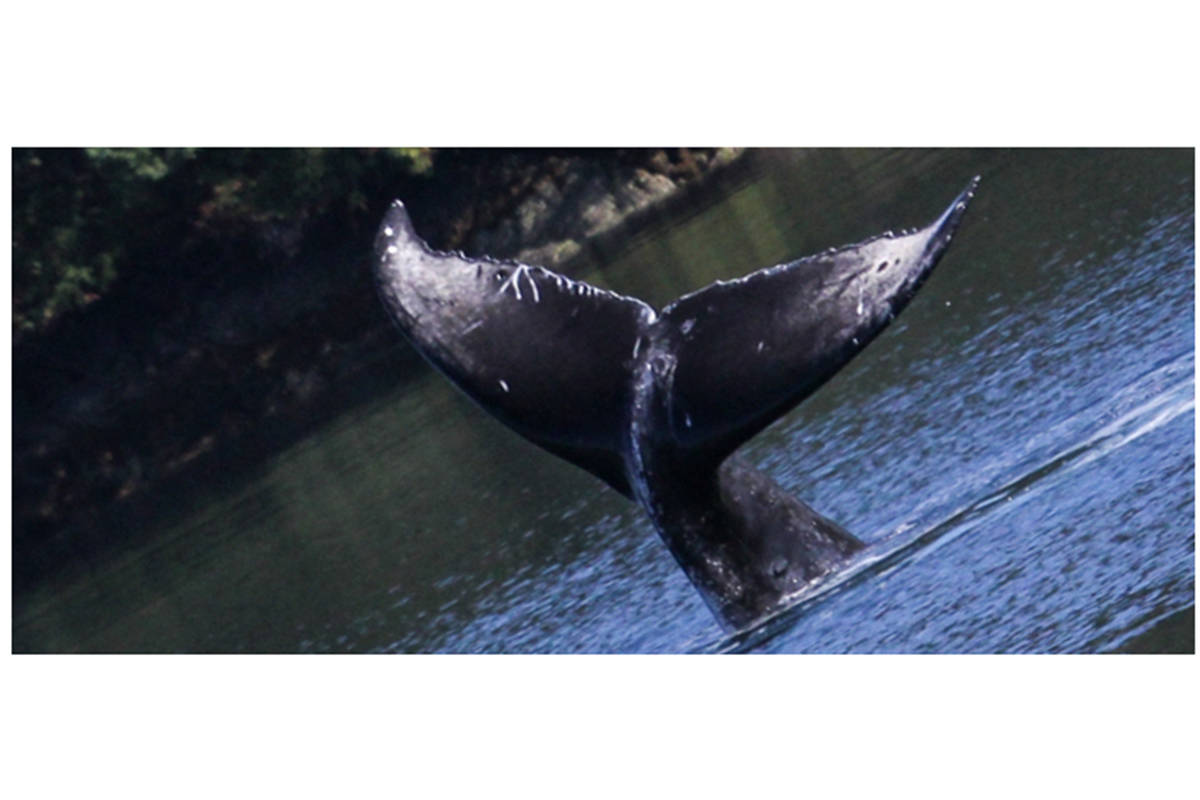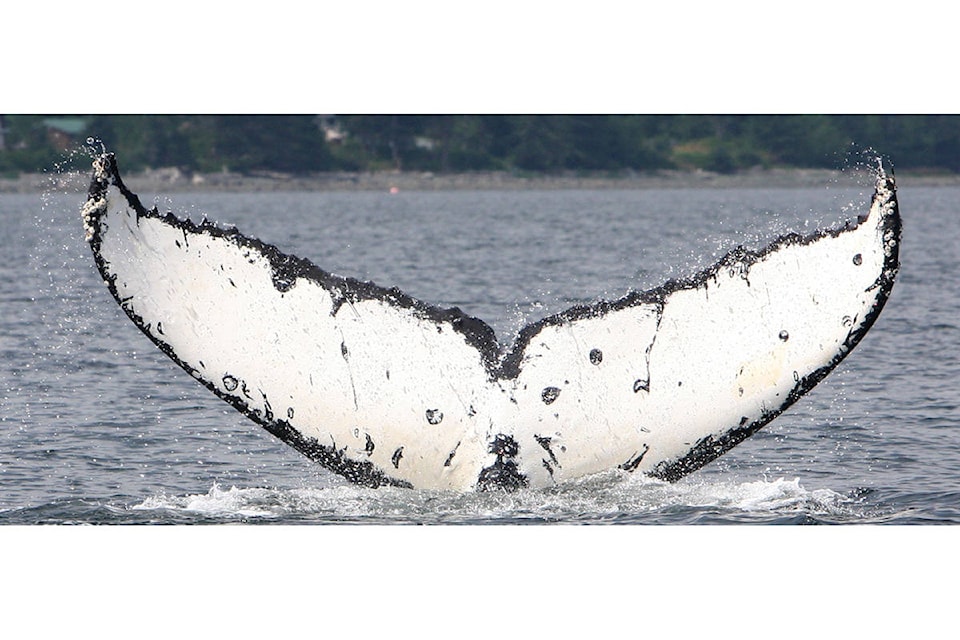Poseidon, the adolescent humpback, is back in town for North Islanders.
The one-year-old whale was first spotted last year in Neroutsos Inlet at Port Alice, swimming around with its mother, Whiskers. She’s named for the cat-like image on her tail. Poseidon was named by the students at Port Alice’s Sea View school for its three stripes, which they thought resembled Poseidon’s trident.
The humpback has returned, unusually, to the other side of the Island. It’s been spotted feeding near Port McNeill and as far down as Telegraph Cove. The return, while exciting for whale watchers and those who recognize the youngster, also comes with warnings for boaters.
READ MORE: Humpback calf named in honour of whale-loving B.C. girl who died of rare genetic disease
Humpback whales were nearly extinct to the point where boaters forgot about their unpredictable behaviour. These whales act differently from orcas, who travel in pods and tend to traverse in relatively straight lines. Orcas also use echolocation, so they’re likely to be aware of boats and more easily avoid them.
However, humpbacks can get as large as a school bus, and can become “suddenly acrobatic” when they are feeding. Their movements are fast, powerful and unpredictable, said Jackie Hildering, co-founder of the Marine Education and Research Society (MERS).
They are a threat to boaters, who likewise are a threat to the whales.
“It’s a horrible thing to say but it is going to lead to a fatality,” Hildering said, adding that education about marine mammals is missing from boater licensing in B.C., both for small craft operators and larger vessels. MERS runs an awareness campaign called “see a blow, go slow” that’s aimed at getting watercraft operators to be aware of mammal life below.
“Humpbacks can surface anywhere along the coast,” Hildering said, noting the recent collision between a humpback and the Washington State Ferry.
“Poseidon is hungry. He or she has come up from warm waters where there’s little to nothing to eat.” Humpbacks whales in this area are most often lunge feeders, which means they speed through water dense with fish or krill — often balls of herrings — with a wide open mouth to collect all they can.
READ MORE: Southern resident orca who carried her dead calf is pregnant again
If they’re feeding at the surface, you might see gulls also eating the herring, which is an indicator of where they might surface. But if they’re deep-water fishing, their whereabouts are unknown.
For more news from Vancouver Island and beyond delivered daily into your inbox, please click here.

